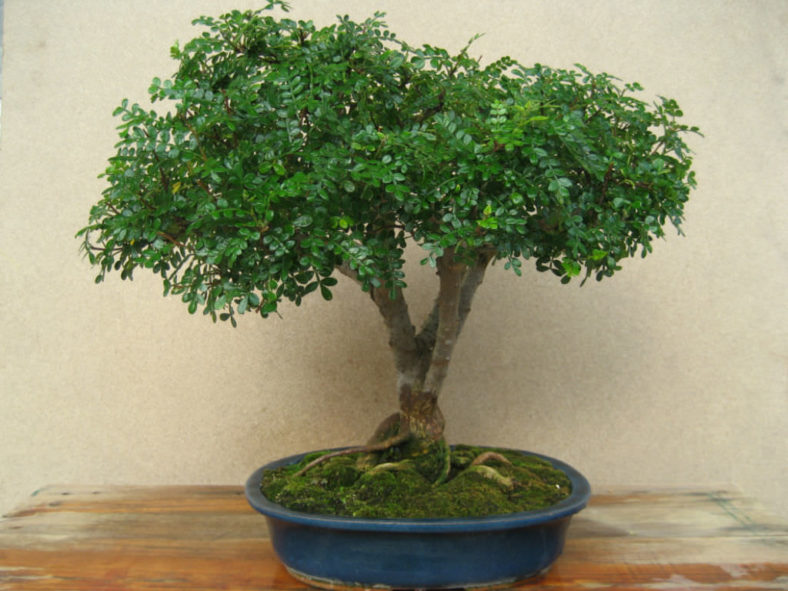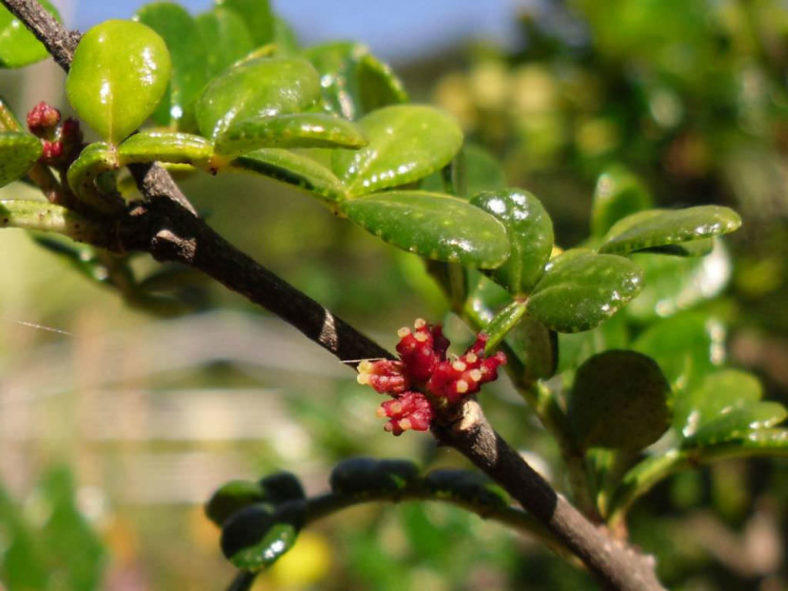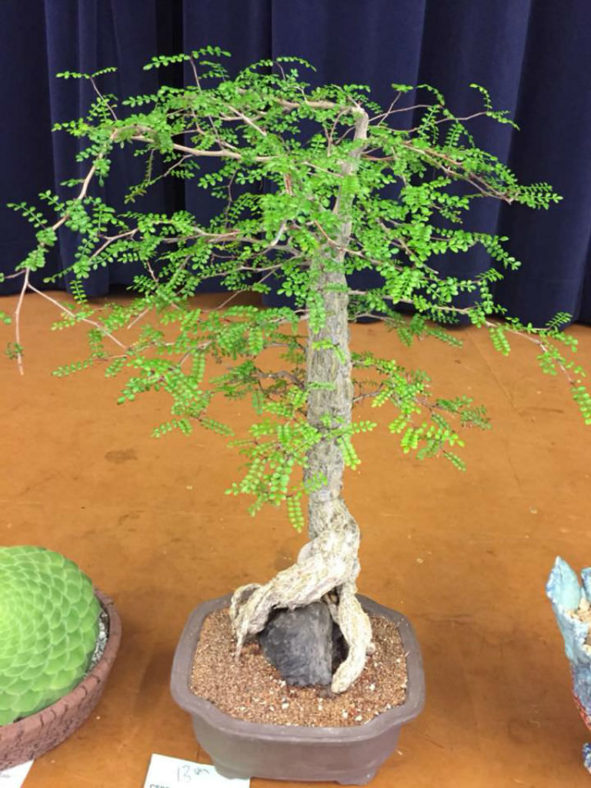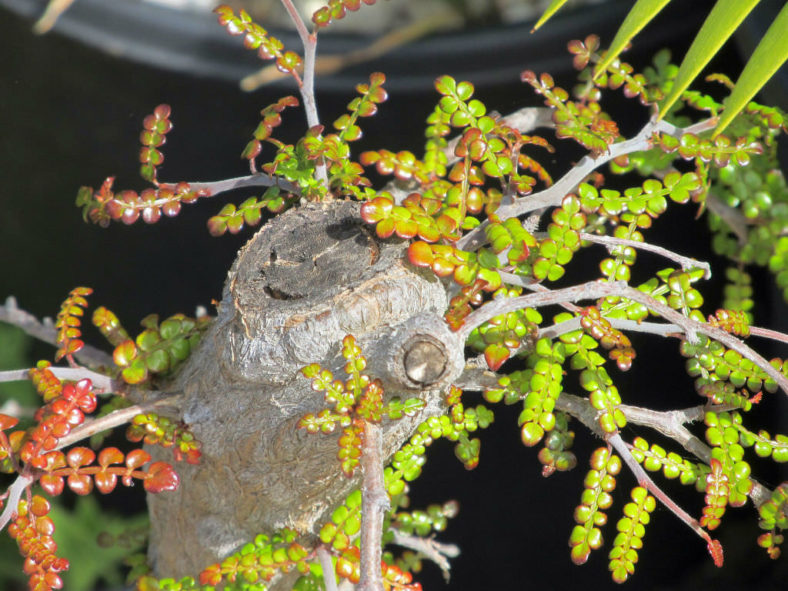Scientific Name
Operculicarya decaryi H. Perrier
Common Name(s)
Elephant Tree, Jabily
Scientific Classification
Family: Anacardiaceae
Subfamily: Spondiadoideae
Genus: Operculicarya
Description
Operculicarya decaryi is an attractive small tree with a thick, bumpy, twisted trunk, zigzagging branches, and alternate, odd-pinnate leaves. It is a natural bonsai tree with stems reaching up to 3.3 feet (1 m) in diameter. The leaves have tiny, rounded, shiny dark green leaflets, often beautifully tinged red in colder weather.
In late winter, mature plants produce small, reddish to brown flowers at the tips of the branches. The male and female flowers are on separate plants. The small spherical fruits age from yellow-orange to red on female plants. The seeds are viable only when male and female plants flower together.

Hardiness
USDA hardiness zones 9b to 11b: from 25 °F (−3.9 °C) to 50 °F (+10 °C).
How to Grow and Care
The Elephant Tree is quite a strong plant, and because it is grown in rather harsh conditions, it is a relatively adaptable species. This plant is drought tolerant and does well in full sun in most places. However, it cannot tolerate freezing conditions.
It does not need an enormous amount of water, but it can enjoy quite a lot of water during the growing season. Water a bit more regularly if in a container. Its roots will swell underneath the soil; you will only know that when you repot the plant.
In cold winters, plants will be more or less deciduous but remain evergreen in warmer locations. Avoid watering during periods of dormancy.
Like most caudiciforms, this plant enjoys fast-draining potting soil. Avoid peat if possible, and amend the soil with drainage material such as pumice, expanded shale, perlite, or a similar product.
See more at How to Grow and Care for an Elephant Tree (Operculicarya decaryi).
Origin
Operculicarya decaryi is native to Madagascar.
Links
- Back to genus Operculicarya
- Succupedia: Browse succulents by Scientific Name, Common Name, Genus, Family, USDA Hardiness Zone, Origin, or cacti by Genus
Photo Gallery
Click on a photo to see a larger version.


